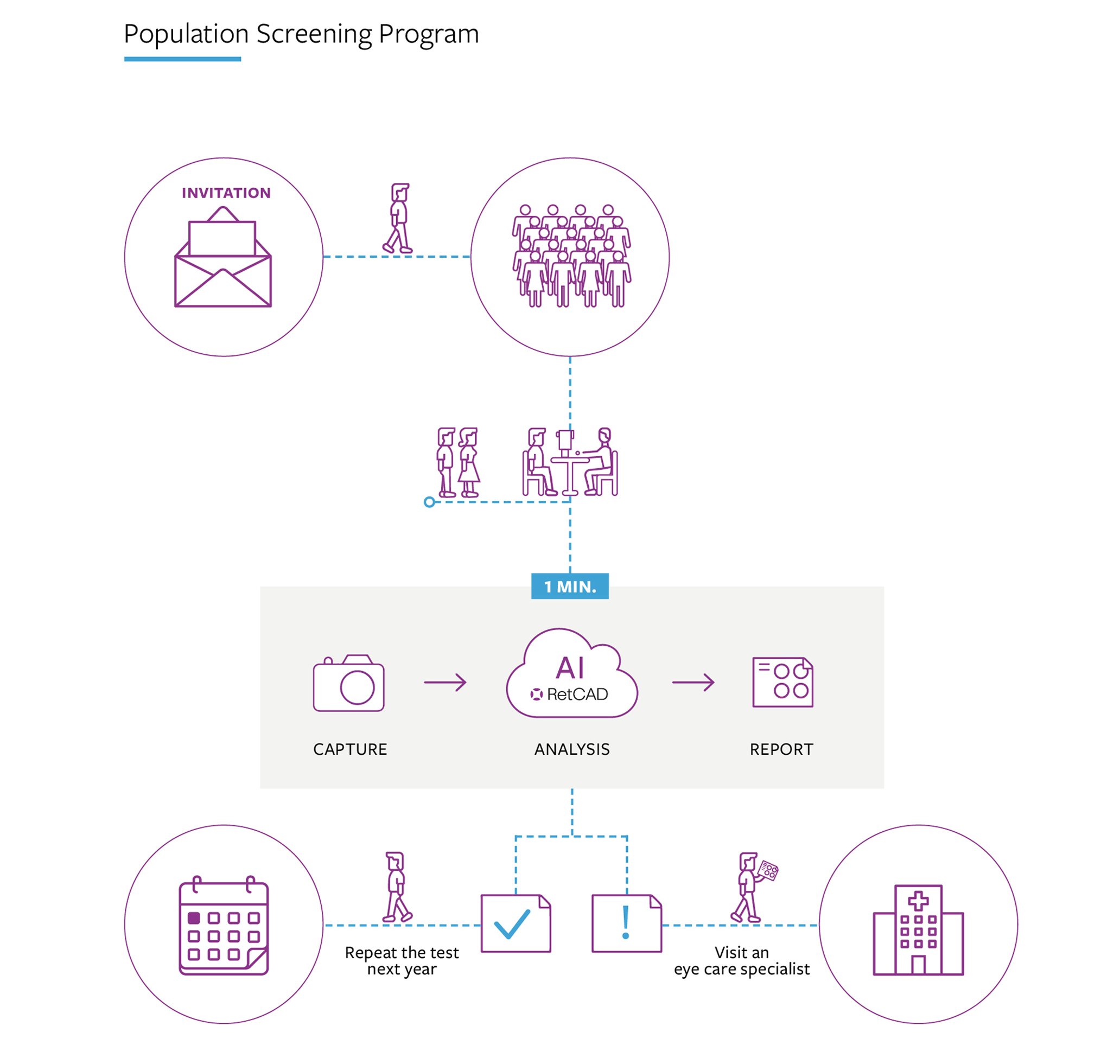
Fast and reliable screening of big populations for eye disease symptoms
Visiting a doctor after some signs of an eye disease have already appeared can often be too late. Many symptoms can only be noticed when the disease has already developed too far. Especially in case of Diabetic Retinopathy (DR), a sight-threatening complication of diabetes, it is extremely important to have a diagnosis confirmed timely. There are more than 93 million people who live with DR worldwide. Though the disease is one of the leading causes of impaired vision in the working-age population, it can be kept under control if diagnosed early.
The Challenge:
Many countries have already implemented nationally coordinated screening programs for populations with an increased risk of DR. This is to ensure that people have access to timely health checks, even before any vision problems occur. Running such programs at a large scale requires large capacity on the side of medical eye specialists. Examination of hundreds or thousands of people, including analysis and evaluation of multiple eye scans per person, puts an incredible workload on the healthcare institutions, making the programs difficult to implement.
The Solution
Artificial Intelligence solutions like RetCAD can play an important role, enabling automated though highly reliable eye examinations to be conducted quickly and effortlessly. With AI-enabled thoroughly validated software, population screening programs can be implemented at any scale, without much pressure on the healthcare capacity. A detailed patient report generated instantly by the software includes precisely quantified abnormalities detected through the eye image analysis and provides clear recommendations for the patient. By making AI solutions widely available for such programs, we can help many more diabetes faster and help them prevent severe vision problems of blindness.
It’s quick, simple and reliable:
RetCAD software has over 95% sensitivity when detecting referable diabetic retinopathy! Read the full validation study on how RetCAD performed in comparison with human graders.
